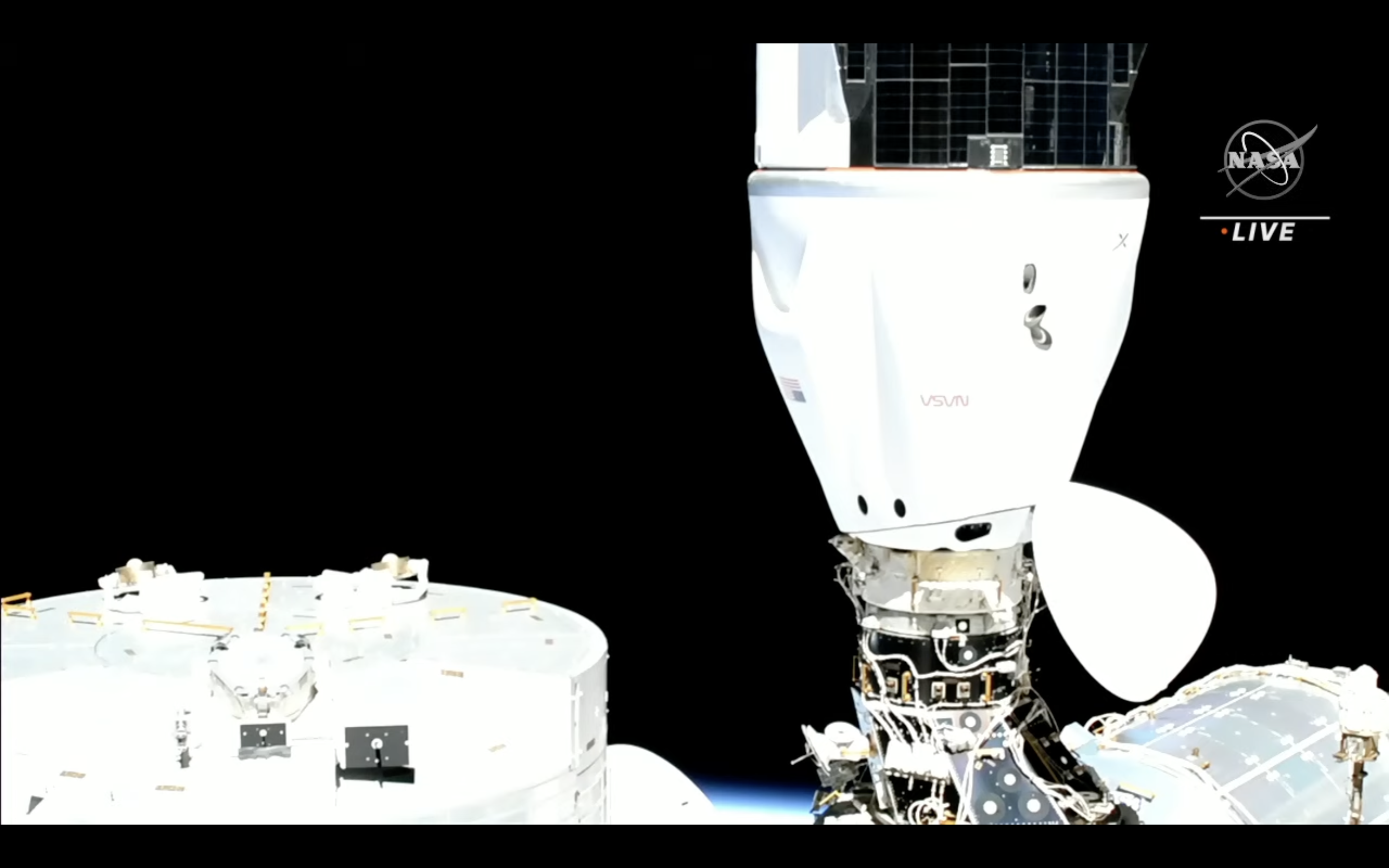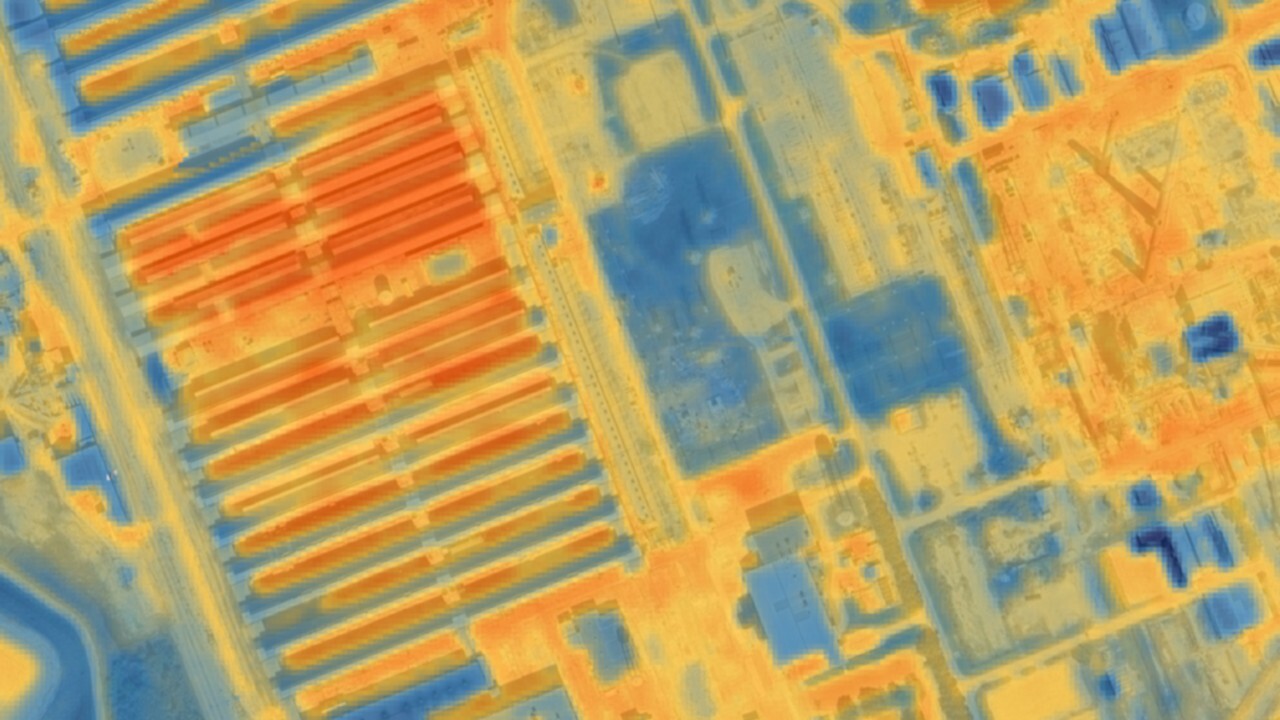SpaceX's Crew-6 astronauts arrive at space station after hour-long delay
SpaceX's Crew-6 astronaut mission arrived at the International Space Station (ISS) early Friday morning (March 3), but not without a little drama.
Crew-6's Dragon capsule, named Endeavour, docked with the ISS's Harmony module at 1:40 a.m. EST (0640 GMT) on Friday, while the two spacecraft were flying off the coast of Somalia at an altitude of 261 miles (420 kilometers).
Crew-6 was positioned to dock about an hour earlier than that, but Endeavour stood down while SpaceX troubleshot a faulty sensor with one of the 12 hooks that helps the capsule connect to the ISS. Eventually, ground teams beamed up a software override that fixed the sensor problem, and Endeavour pulled off a successful rendezvous.
Related: Live updates about SpaceX's Crew-6 mission for NASA
"After a brief scenic detour, welcome to the International Space Station!" SpaceX's David Hwang told the Crew-6 astronauts from mission control just after docking occurred.
"We're happy to be here," Crew-6 commander Stephen Bowen responded.
Bowen and his three crewmates — NASA's Woody Hoburg, the United Arab Emirates' Sultan Al Neyadi and Russian cosmonaut Andrey Fedyaev — will float aboard the ISS around 3:18 a.m. EST (0518 GMT) on Friday, when the hatches between the two spacecraft are opened.
Breaking space news, the latest updates on rocket launches, skywatching events and more!

That same faulty hook sensor also caused a minor problem shortly after the Crew-6 launch, which occurred at 12:34 a.m. EST (0534 GMT) on Thursday (March 2). The problem briefly stalled Endeavour's attempt to open its nose cone in Earth orbit, but this milestone was achieved after the capsule switched over to a backup system.
The docking drama came as a bit of a surprise: At a news conference about two hours after launch, Benji Reed, senior director of SpaceX's human spaceflight program, said that he didn't anticipate the hook sensor causing any more trouble going forward.
Crew-6 will overlap, albeit briefly, with another SpaceX mission in orbit — Crew-5, which arrived at the ISS in early October. The Crew-5 quartet — NASA's Josh Cassada and Nicole Mann, Koichi Wakata of Japan and cosmonaut Anna Kikina — are scheduled to return to Earth about five days from now.
The Crew-5 astronauts aren't the only people welcoming the Crew-6 quartet aboard. Also living on the orbiting lab at the moment are NASA's Frank Rubio and cosmonauts Sergey Prokopyev and Dmitry Petelin, who arrived in September aboard a Russian Soyuz spacecraft.
The trio's Soyuz sprang a coolant leak in mid-December, rendering it unfit to carry the spaceflyers home except in case of emergency. So Russia's space agency, Roscosmos, launched an uncrewed replacement Soyuz last month to be their ride back to Earth.
That ride will now occur in late September or so, meaning that Rubio, Propkopyev and Petelin will spend six more months on the ISS than originally planned.
Editor's note: This story was updated at 2:45 a.m. EST on March 3 with news of successful docking.
Mike Wall is the author of "Out There" (Grand Central Publishing, 2018; illustrated by Karl Tate), a book about the search for alien life. Follow him on Twitter @michaeldwall. Follow us @Spacedotcom, or on Facebook and Instagram.

Michael Wall is a Senior Space Writer with Space.com and joined the team in 2010. He primarily covers exoplanets, spaceflight and military space, but has been known to dabble in the space art beat. His book about the search for alien life, "Out There," was published on Nov. 13, 2018. Before becoming a science writer, Michael worked as a herpetologist and wildlife biologist. He has a Ph.D. in evolutionary biology from the University of Sydney, Australia, a bachelor's degree from the University of Arizona, and a graduate certificate in science writing from the University of California, Santa Cruz. To find out what his latest project is, you can follow Michael on Twitter.
